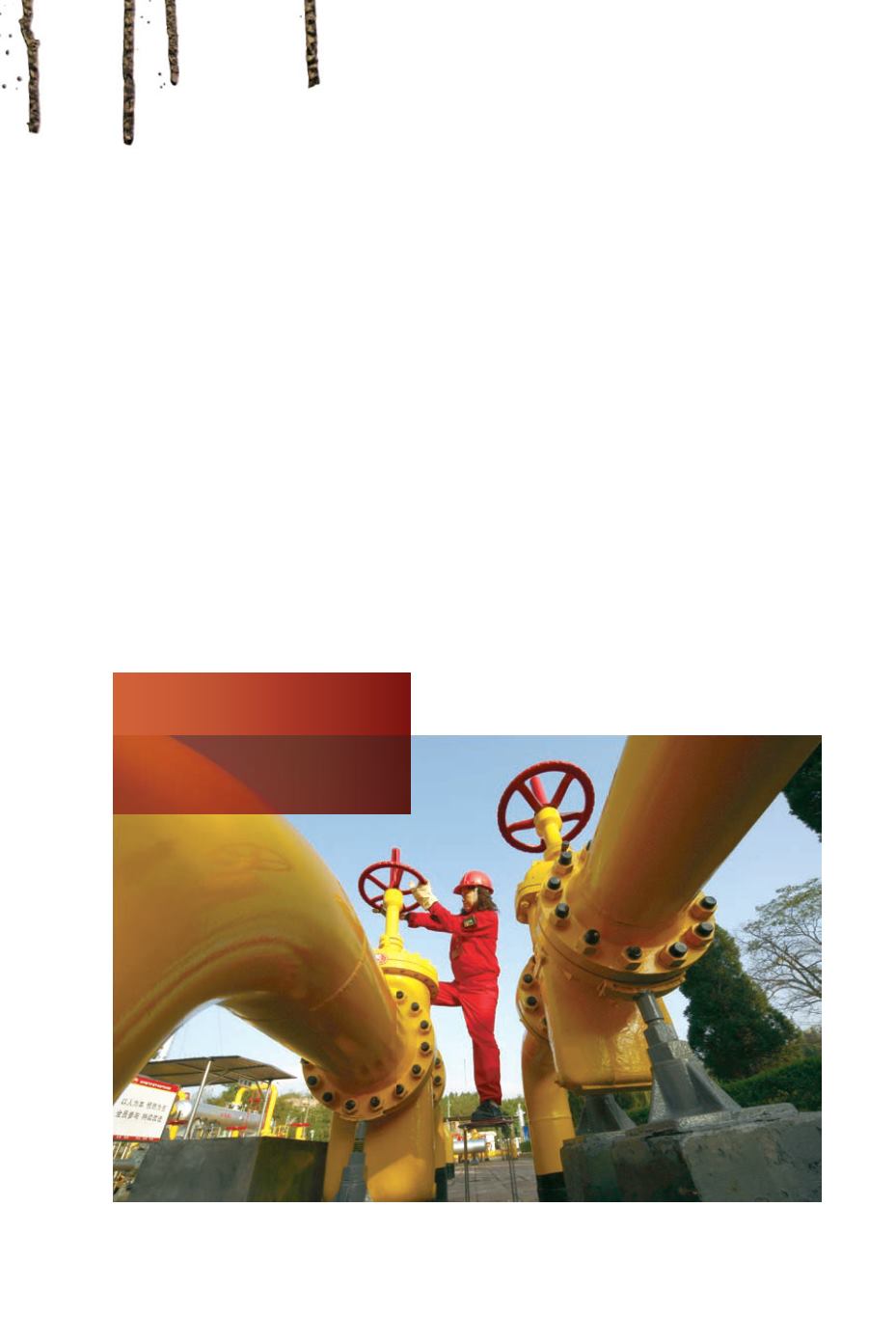
37
B
IG OI
L
This enormous oil company is far from the world’s largest,
however. In fact, Chevron is only the world’s ninth-largest oil
company. In 2012 it produced 3.5 million barrels of oil per day—
well behind PetroChina, a government-owned Chinese com-
pany, No. 5 on the list with 4.4 million barrels per day. Exxon
ranked fourth with 5.3 million barrels per day. In 2012 Saudi
Aramco was the world’s top producer, with 12.5 million barrels
per day and profits of more than $40 billion per year.
A worker for PetroChina checks
equipment at Moxi Natural Gas
Purification Plant in southern
China. PetroChina is the
country’s largest producer of oil.
Like Chevron, most big oil companies operate worldwide.
And these giant companies often combine forces, making their
operations even more substantial. For instance, in the first
decade of the twenty-first century, Chevron partnered with
ExxonMobil, Royal Dutch Shell, BP (formerly British Petroleum),
and several Russian oil companies to build the Caspian Pipe-
line, which carries oil west from the Tengiz oil field in Kazakh-
stan to a port on the Black Sea. Such consortiums are common-
place in the oil industry. They enable big companies to share the
cost of an expensive development
project, to share the profits if an


